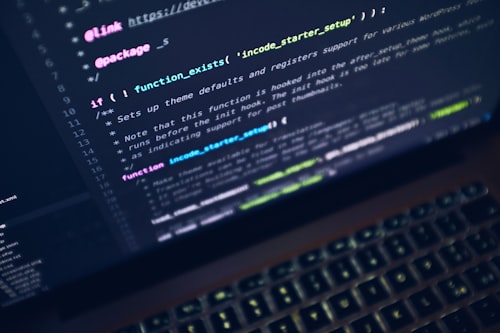Introduction
Email validation is a critical aspect of web development to ensure the accuracy and validity of email addresses. Whether you are building a registration form, contact form, or any application that involves email communication, implementing an email checker code is essential. In this comprehensive guide, we will explore various techniques and tools for email validation, popular libraries and resources, and best practices to develop reliable email checker code. By mastering the art of email checker code, you can enhance the user experience, minimize bounce rates, and maintain a high level of data integrity in your applications.
The Importance of Email Validation
Email validation plays a crucial role in maintaining the quality and reliability of your applications. Here are some key reasons why email validation is important:
Data Accuracy: Email validation ensures that the email addresses collected from users are accurate and correctly formatted, reducing the risk of data entry errors and invalid email addresses.
Enhanced User Experience: By validating email addresses in real-time, you can provide immediate feedback to users, preventing them from entering incorrect or invalid email addresses and improving the overall user experience.
Reduced Bounce Rates: Validating email addresses helps minimize bounce rates by identifying and filtering out invalid or non-existent email addresses. This improves email deliverability and enhances the effectiveness of your email campaigns.
Prevention of Spam and Fraud: Email validation helps prevent spam registrations and fraudulent activities by verifying the legitimacy of email addresses and blocking suspicious or disposable email domains.
Email Validation Techniques
There are multiple techniques to validate email addresses in your code. Here are some commonly used techniques:
Regular Expressions: Regular expressions (regex) are powerful patterns used to match and validate email addresses based on a predefined pattern. Regex provides flexibility and control over the validation process, allowing you to customize the validation criteria.
Domain Validation: Domain validation involves checking the domain of the email address to ensure that it exists and is properly configured. This technique verifies the DNS records and MX records of the domain to validate the email address.
SMTP Verification: SMTP verification involves establishing a connection with the recipient's mail server and simulating the sending of an email to verify if the email address is valid and can receive messages.
Popular Email Checker Libraries and Resources
Several libraries and resources are available to simplify the email validation process. Here are some popular ones:
HTML Email Check: HTML Email Check is an online tool that allows you to validate email addresses by simply entering them into the tool. It provides instant results indicating whether the email address is valid or not.
W3Resource Email Validation: W3Resource provides a JavaScript-based email validation script that you can integrate into your web applications. The script uses regex patterns to validate email addresses.
GitHub Email Checker: GitHub hosts several open-source email checker libraries that you can use in your projects. These libraries provide advanced email validation features and can be customized to suit your specific requirements.
Verifalia: Verifalia is a popular email validation service that offers an API for integrating email verification into your applications. The service provides comprehensive email validation features, including syntax checking, domain validation, and mailbox existence verification.
Simplilearn Email Validation in JavaScript: Simplilearn offers a tutorial on email validation in JavaScript, providing step-by-step guidance on implementing email validation using regex patterns in JavaScript.
Best Practices for Developing Email Checker Code
To ensure accurate and reliable email validation, consider the following best practices when developing email checker code:
Use a Combination of Techniques: Combine multiple email validation techniques to enhance the accuracy of the validation process. For example, you can use regex patterns for initial validation and then perform domain validation or SMTP verification for further verification.
Follow Industry Standards: Adhere to industry standards and recommended practices for email validation. This includes using standardized regex patterns and implementing checks for common email format requirements.
Handle International Email Addresses: Email addresses can have international characters and domain names. Ensure that your email checker code supports and handles these cases appropriately.
Regularly Update Email Validation Code: Keep your email checker code up to date to accommodate changes in email address formats and domain validation techniques. Stay informed about the latest industry trends and updates in email validation.
Perform Real-Time Validation: Implement real-time validation in your forms to provide immediate feedback to users. This helps prevent incorrect email addresses from being entered and improves the user experience.
Consider Performance and Scalability: Optimize your email checker code for performance and scalability, especially when dealing with large volumes of email addresses. Use efficient algorithms and techniques to ensure smooth validation processes.
Frequently Asked Questions (FAQs)
1. Why is email validation important?
A1: Email validation is important to ensure data accuracy, enhance user experience, reduce bounce rates, and prevent spam and fraud.
2. What are the popular email checker libraries?
A2: Popular email checker libraries include HTML Email Check, W3Resource Email Validation, GitHub Email Checker, Verifalia, and Simplilearn Email Validation in JavaScript.
3. What techniques can I use to validate email addresses?
A3: You can use regular expressions, domain validation, and SMTP verification techniques to validate email addresses.
4. How often should I update my email validation code?
A4: It is recommended to regularly update your email validation code to accommodate changes in email address formats and domain validation techniques.
5. Should I perform real-time validation in my forms?
A5: Performing real-time validation in your forms is highly recommended to provide immediate feedback to users and improve the user experience.
Conclusion
Implementing effective email checker code is crucial for ensuring the accuracy and validity of email addresses in your applications. By following the techniques, utilizing popular libraries and resources, and adhering to best practices outlined in this guide, you can develop robust email validation processes. Accurate email validation leads to enhanced data integrity, improved user experience, and increased deliverability of your email communications. Stay up to date with the latest trends and advancements in email validation to continuously improve the quality and reliability of your applications.



